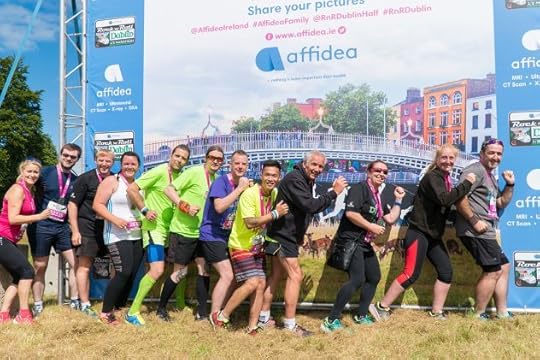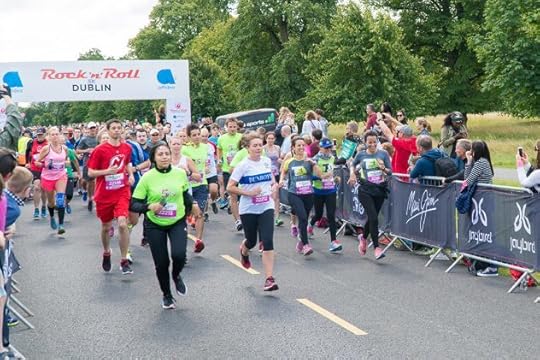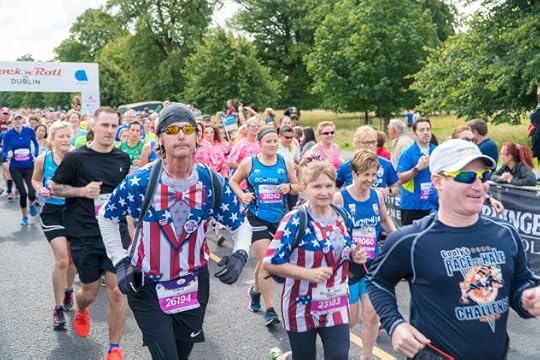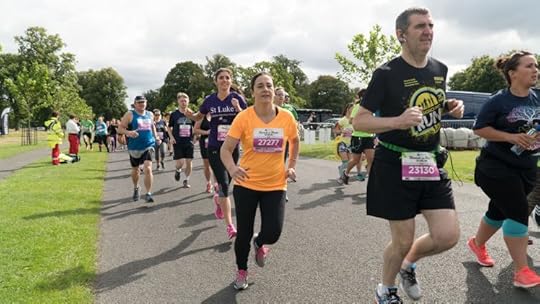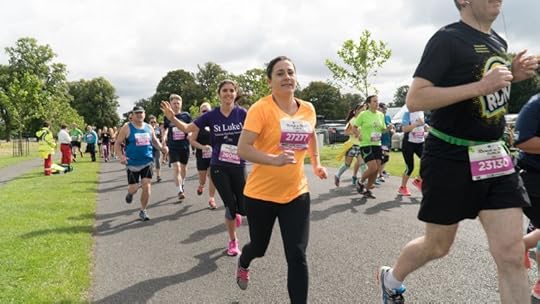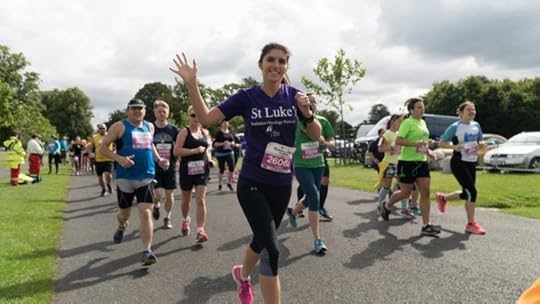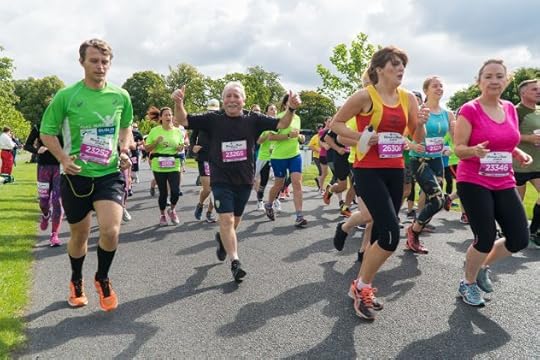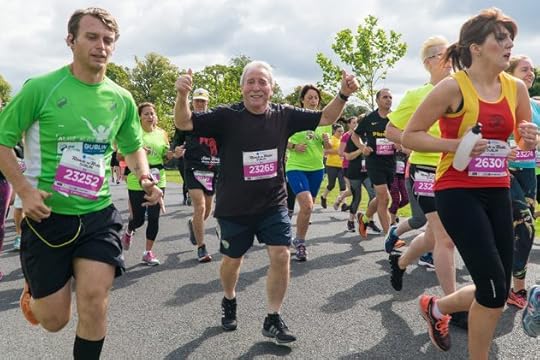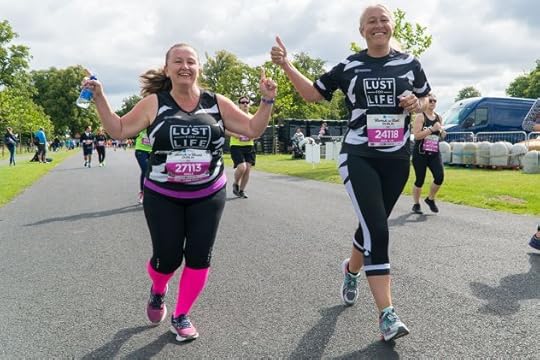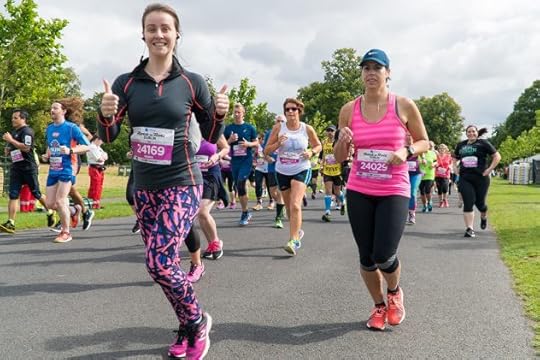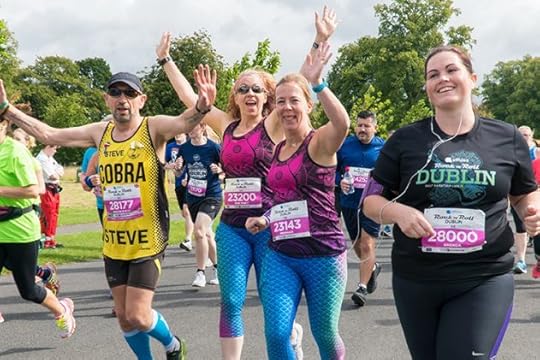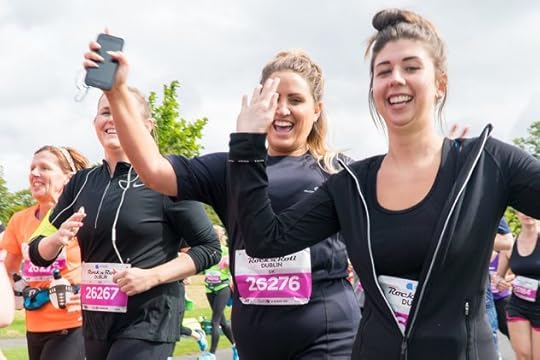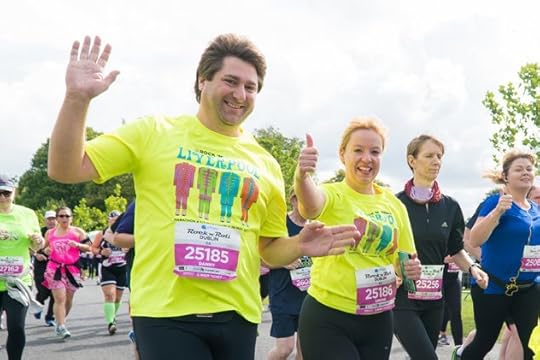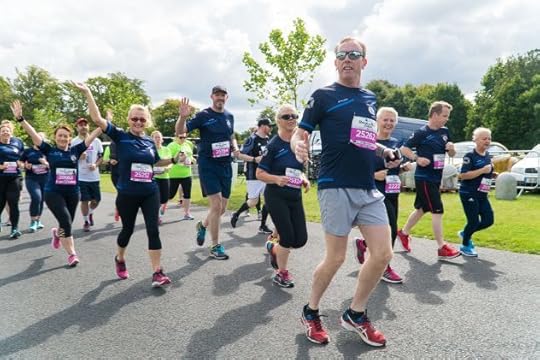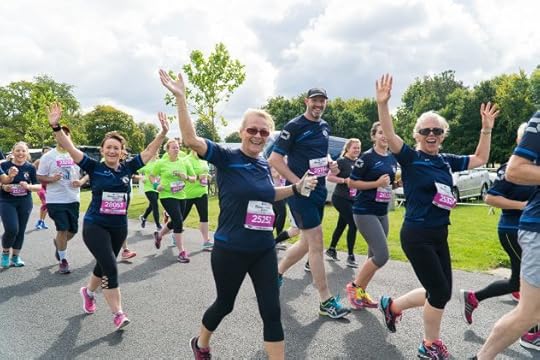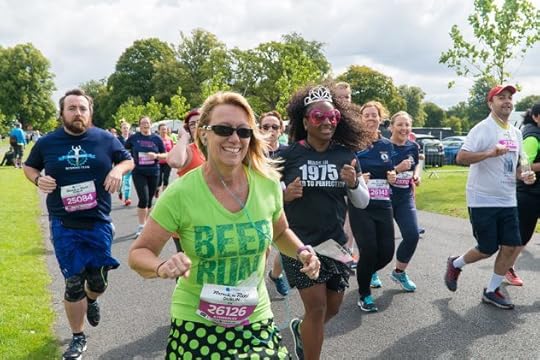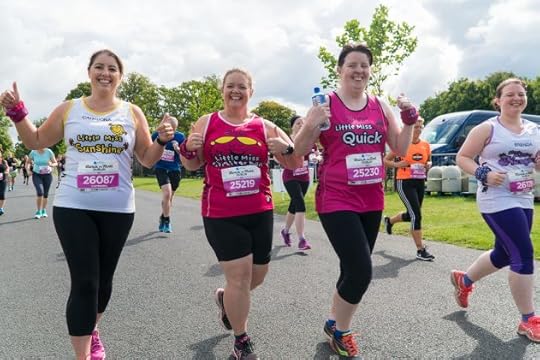Ryan Hall's Blog, page 140
August 14, 2017
Why Coconut Oil As A Fat Source For Athletes Is Overrated

Coconut oil is a pantry staple among the clean eating, paleo and Bulletproof crowd and there are no shortage of online sources waxing poetic about its supposed health benefits. Increasingly, athletes have also become smitten with the tropical fat, believing it can trim the waistline and supercharge workouts. Yes, fat is back in and coconut oil’s stock has skyrocketed.
So when the American Heart Association (AHA) recently released a report on the role dietary fats play in cardiovascular health that included a small but decisive section encouraging people to lay off coconut oil for better heart health, feathers were ruffled. “Because coconut oil increases LDL cholesterol, a cause of cardiovascular disease, and has no known offsetting favorable effects, we advise against the use of coconut oil,” the report reads, in part.
For some, it was like declaring kale a nutritional villain and coconut oil boasters were quick to deem the scientists as stodgy crocks. But when you separate the science from the sales pitch, coconut oil’s awesome-for-you rap is largely overblown and not supported by good data.
Coconut oil is made by pressing the fat from the white flesh inside the giant nut. About 84 percent of the calories in the resulting oil hail from saturated fat. That makes coconut oil denser in saturated fat than most other oils and solid fats—14 percent of the calories in olive oil are saturated, whereas 63 percent of the calories in butter hail from saturated fats. Hence, why it has been historically demonized by many nutritionists and health organizations including the AHA.
Coconut oil raised LDL cholesterol, a so-called “bad” form of cholesterol, about as much as other oils high in saturated fat like beef, butter and palm oil in the existing research reviewed by the AHA for its advisory published in the journal Circulation. And that can be bad news for your ticker. But there is a catch. Coconut oil boosters rally behind studies suggesting it also raises levels of HDL cholesterol, a form of cholesterol deemed “good.” (Unlike LDL, HDL cholesterol is thought not to build up on artery walls and increase this risk for a heart attack or stroke). Research, however, is inconclusive as to the impact that coconut oil has on the total cholesterol-to-HDL ratio as well as blood triglyceride numbers, which can be more significant predictors of coronary woes than straight up HDL numbers. And many other factors including inflammation, arterial calcification and genetic mutations can also play a role in heart maladies.
“People are kidding themselves if they think that eating coconut oil alone is enough to improve their health,” says sports dietitian and Ironman competitor Marni Sumbal. “The research we have still suggests that we should not be using coconut oil as a substitute for other high-fat foods like olive oil, avocado, and nuts that have more proven health benefits.”
Researchers at Harvard reported that replacing 5 percent of the saturated fat calories in a diet with polyunsaturated and monounsaturated calories can slash heart disease risk by 25 and 15 percent respectively. Now to be fair, that also includes other forms of saturated fat found in items like meat and dairy, and replacing saturated fat with processed carbs like white bread and sugar brings about no improved health measures.
RELATED: An Easier Way To Become A Better Fat Burner
Though the science remains a bit cloudy at this point, let’s say that, at best, coconut oil may have a neutral impact on your beating organ. It likely won’t improve your heart health, but it appears not to definitively increase your risk for heart disease, either. “More so if your daily diet doesn’t consist of spoonful’s of coconut oil and instead focuses on other disease-fighting foods like vegetables, fruits, whole grains and seeds,” notes Sumbal. “The big concern is people who are using coconut oil in excessive quantities believing it’s the magical panacea when it’s anything but.”
Lower down from the heart, the reason coconut oil is trumpeted as helping in the battle of the bulge is largely due to its higher proportion of saturated medium-chain triglycerides (MCTs) than most other fats like olive oil or butter. The human body handles MCTs like lauric acid in coconut oil differently than long chain fats and prefers to burn them off for energy rather than storing them as flab.
But you should know that studies like the ones from the early 2000s in which researchers at McGill University in Canada found that MCTs did a better job at increasing thermogenesis (burning calories) and fat oxidation (breakdown of fat for energy) than long chain fats in overweight men and women have been wildly misinterpreted. Those researchers used oil designed to contain 100 percent MCTs— not coconut oil, which is made up of only about 15 percent MCTs. You need 15 to 20 grams of purified MCT oil to experience an uptick in metabolism.
The upshot is that huge amounts of coconut oil would have to be consumed for a metabolic effect to occur. Smaller doses of MCTs—like what you would find in coconut oil—have not been shown to noticeably raise metabolism. And a recent study found that a meal containing virgin coconut oil made people feel hungrier than a meal containing extra virgin olive oil. Add enough coconut oil and it’s 116 calories per tablespoon added to your diet to get the MCTs you need to rev metabolism and Sumbal says you will surely gain weight not lose it. “Sorry to be a downer, but coconut oil is a weight-loss dead end.”
Beyond the belief that it helps maintain race weight, athletes may turn to coconut oil under the assumption that the MCTs it contains also delivers a rapid source of energy for working muscles and can reduce the reliance on carbohydrates. Again, studies pertaining to athletic performance have used 100 percent MCT oil which provide a much greater dose of these fats than you would get from coconut oil.
“Besides, even lean athletes have enough fat stores to power hours and hours of moderate exercise, so spooning up coconut oil for this purpose is fairly pointless,” notes Sumbal. She adds that when you pick up the pace you actually want to rely on carbohydrates as an energy source since they are much more efficient at powering muscles during high intensity efforts than fats. “There was a time when MCT supplementation was gaining steam with athletes, but then GI issues started to arise and its use started to wane.”
The Bottom line: It’s not that coconut oil is some kind of diabolical, disease-causing dietary evil—it’s just that the available evidence suggests that it is undeserving of a health halo and shouldn’t be the number one fat source in your diet. If you like its flavor or the moistness it adds to baked goods, go ahead and include small amounts—say no more than a tablespoon daily—in your eating plan and keep loading up on better-for-you fat sources and whole foods.
RELATED: Carbs Versus Fat Fueled Workouts—Which Is Better?
The post Why Coconut Oil As A Fat Source For Athletes Is Overrated appeared first on Competitor.com.
Why People Are Running A Mile In Their Blue Jeans

Rory Linkletter has ran one of the fastest blue jean miles in 4:16. Photo: Courtesy of BYUPhotos
The blue jean mile started as a joke. When Citius Mag contributor Paul Snyder posted a tongue-in-cheek editorial about how to drum up interest in track and field, he really didn’t think anyone would take it seriously.
“Honestly, it wasn’t given a ton of thought,” laughs Snyder. “I was riffing on the age-old question: How can we get people to care about track?”
The typical suggestions pundits give—incorporating drinking or gambling to meets, for example—are copied from other racing events such as NASCAR or the horse track, says Synder, and don’t quite work for a human sport. Absurdity begets absurdity, so Snyder proposed a different solution to track’s popularity woes: make people run in blue jeans.
“I didn’t think anyone would actually want to do a blue jean mile, because I sure as hell don’t. I just thought the image of people running really hard in just blue jeans was really funny—like some perverse Bruce Springsteen video outtake.”
The rules of the blue jean mile, as outlined by Snyder, were simple: provide video evidence of breaking 4:00 (for men) or 4:36 (women) for the mile while wearing blue jeans (real, true, denim blue jeans—no lycra-blend jeggings).
“In the interest of bringing positive attention to the sport we all love,” Snyder wrote in the post, “I’m putting my money where my mouth is and coughing up $200 toward a prize purse.”
As soon as the article went live, complete strangers came out of the woodwork, accepting the challenge or offering to contribute money to an even bigger prize purse. Snyder was surprised that so many were willing to invest their money and/or lap splits toward the joke. Even more surprising was that the blue jean mile was already a thing:
“I didn’t know this when I wrote the article, but there was already a group of Kansans who for years have held a semi-annual blue jean mile, but with less fanfare. There was a race in New York City in July that attracted some tri-state people; probably a ton of other low-key ones. It’s incredibly odd.”
But odd is refreshing for track and field, a sport that has been burdened with criticism for years: meets are boring, TV coverage is even more boring, and few people actually watch track and field outside of the Olympics. But the blue jean mile? It’s gone viral. People love it. More than 100 videos have been submitted, and even more are talking about the stunt on social media.
As of press time, no one has broken the time barriers to claim the prize purse, which has grown to $1,200. There have been a few close calls, however. Utah’s Rory Linkletter, runner-up at last year’s NCAA 10,000-meter championship, ran a blue jean mile in 4:16:00. Heather Wilson, a professional runner for the New Jersey/New York Track Club, recently ran the first ratified women’s sub-5 blue jean mile, going 4:58 in North Caroliina.
As for Snyder’s time? “I have not, nor will I ever take the challenge.”
He does have some advice for those willing to take it, though, “We’re still learning a lot about this event and how the human body performs under pressure while wearing denim, but based on what we’ve seen so far, I’d recommend the following: Go with something a little more billowy—maybe not straight up JNCOs, but you want some room to operate so leave the skinny jeans at home. Definitely wear something comfortable yet protective like running shorts under said jeans. And if you know your body is prone to inner thigh chaffing, it can’t hurt to slather on a little Vaseline down there.”
If you’ve got what it takes to win in your Wranglers, better get cracking. “We hope to shut the socially acceptable blue jean mile window on Labor Day. You know, make it like wearing white… you can do it between Memorial and Labor Day, but outside of that stretch of time, give it a rest.
RELATED: 6 U.S. Mile Road Races To Test Your Speed and Go All Out
The post Why People Are Running A Mile In Their Blue Jeans appeared first on Competitor.com.
Plenty Of Surprises At The Final Weekend Of IAAF World Championships

Photo: Photorun.net
The closing weekend of the IAAF World Championships in London provided lots of action and plenty of surprise performances, including what could be considered one of the best American middle distance races in history. In case you missed anything, here are the races that you should go back and watch.
Coburn and Frerichs go 1-2 in steeplechase
In perhaps the most surprising and exciting race of the entire meet, Emma Coburn and Courtney Frerichs pulled off a stunning upset in the steeplechase. The two Americans jockeyed for position during the entire race. Finally, on the last lap, Frerichs swung wide, gaining a brief lead until Coburn executed a flawless water jump. Coburn’s strong kick and perfect last barrier jump allowed her to cruise to victory, in 9:02.58. On her way to becoming world champion, she set a new American record and a meet record.
Coburn said she ran what she felt was the perfect race. “The whole race I just felt strong and controlled and powerful and I kept waiting and waiting for it to feel bad and it never did,” Coburn said to Letsrun.com
Frerichs held off Hyvin Kiyeng Jepkemoi of Kenya to take silver in 9:03.77. This crushed her previous personal best of 9:19.
“I’m just kind of in shock at the moment,” Frerich told Letsrun.com. “Going into the last lap when there are five Jerry had said, if you can stick on Emma you might smell something special. And I looked up and thought ‘This is what he’s talking about. I have to go for this.’”
If there is one race you should watch from the entire meet, it’s this one. See the replay below.
Your browser does not support iframes.
Then watch Coburn’s sister react to her win, which will make you cry again.
When your sister becomes a world champion…
(via @Aric_vh) pic.twitter.com/mtmEdCSpyE
— Sports Illustrated (@SInow) August 11, 2017
U.S. Women dominate both the relays
The U.S. women’s relay teams grabbed gold in both the 4×100 and the 4×400 relays. On Saturday, the 4×100-meter team held the lead for much of the race. Anchor Tori Bowie, the 100-meter champion, secured the win with a swift meters 100 meters, winning her second gold medal of the meet. Then on Sunday, the 4×400 team won by over 6 seconds, helped in large part by Phyllis Francis and Allyson Felix. The two women had already won gold and bronze medals respectively in the open 400. Felix, who was part of both relay teams, earned her 15th and 16th world championship medals, 11 of which are gold.
Men fall short in both relays while Bolt is unable to finish
Meanwhile the U.S. men’s teams had to settle for silver in both of their relays after huge upsets. The 4×100 team lost to Great Britain, while the 4×400 team gave their victory up to Trinidad and Tobago. Both relays were lost in the final 100 meters, as the anchors were out-kicked. Christian Coleman, the final runner in the 100-meter relay and Fred Kerley, who ran the 400, both had finished off long collegiate seasons before training for US and world champs. Their fatigue was a factor in both races. In the 4×100, Usain Bolt pulled up with what is suspected to be a hamstring injury. He was not able to complete his last race ever on the track.
“I don’t think one championship is going to change what I’ve done,” Bolt said in a post-race press conference.
Surprise winners in the men’s and women’s 5000 meters
Most expected Britian’s Mo Farah to win the 5,000, capping off an illustrious track career and giving him his second gold medal of the meet. However, it was not meant to be. The race eventually came down to a group of four runners in the bell lap: Ethiopia’s Muktar Edris and Yomif Kejelcha, Farah, and American Paul Chelimo. Edris’s kick proved to be too much, as he won in 13:32.79. Farah finished right behind him in 13:33.22. Chelimo outraced Kejelcha on the backstretch to take the bronze, giving the Americans yet another medal.
In the women’s race, everyone expected Almaz Ayana of Ethiopia to win again, following her absolutely dominate performance in the 10K. However, Kenya’s Hellen Obiri’s 61-second last lap ensured her a victory. She finished in 14:34, six seconds ahead of Ayana.
Wilson grabs bronze in 800
It was no surprise that South Africa’s Caster Semenya and Burundi’s Francine Niyonsaba went 1 and 2 in Sunday’s 800-meter final. The pre-race favorite, Semenya easily won in 1:55.16, with Niyonsaba right behind in 1:55.92. However, American Ajee Wilson proved her American record in Monaco from last month was no fluke. She was able to keep up with the world leaders and snag the bronze medal.
“I’m happy. I’m grateful that I was able to get a medal,” Wilson said post-race. “Also wish I could have gotten gold of course, but that’s just what I had today so I’m super excited with my performance. I couldn’t be happier.”
In total, the American team led the medal count, with 30 total: ten gold, 11 silver, and nine bronze. This was the most medals an American team has ever won at world championships.
The post Plenty Of Surprises At The Final Weekend Of IAAF World Championships appeared first on Competitor.com.
We Break Down 3 Popular Sleep Tracking Devices

Sleep is critical for our everyday well-being, but also our running performance and recovery. Busy lives, training and even habits such as eyeballing screens late at night can affect the sleep quantity and quality. By using a dedicated sleep tracking device, or the ever-improving sleep modules of many newer GPS watches and activity bands, you can track overall sleep time, see how your performance adds up for different sleep stages and get coaching on how to improve those z’s. We have found that tracking our shut-eye with these devices and reflecting on what pre-bed factors affect our sleep performance has over time seen us getting better, more consistent sleep (even when we can’t get more sleep).
Change Your Sheets
Beddit, recently acquired by Apple, was one of the earliest and is still among the most complete sleep-monitoring and coaching systems. Unlike the others here, Beddit 3 is 100 percent focused on sleep. It combines a thin under-sheet sensor strip ($150, beddit.com) that pairs to your smartphone and its microphone, so there is nothing to wear. It evaluates not only one person’s movement, respiration rate and resting heart rate but also other factors that impact your sleep quality, such as the temperature and humidity of your bedroom and snoring. The app provides a daily sleep score that takes into account your snooze success.
RELATED: Sleep Better (And Longer) To Run Better
Watching You Sleep
Fitbit’s latest heart-rate-sensing bands and watches (Alta HR, Blaze, and Charge 2, $150-plus, fitbit.com) have recently been upgraded to include a sophisticated sleep-quality monitoring and coaching system. Using a combination of motion and heart rate, these wrist devices identify and quantify sleep stages (awake, light sleep, deep sleep, REM sleep), as we cycle through them multiple times per night. Each cycle and stages within are critical to recharging our nervous, immune and musculoskeletal systems as well as our mental faculties. “Sleep Insights” include age and gender benchmarks, 30-day averages and tips to help improve sleep.
Inside Your Head and Heart
Similar in technical approach to Fitbit and Beddit, Whoop Strap 2.0 ($500, whoop.com) uses a combination of motion and heart-rate variability (HRV) to identify sleep stages. It is very light, comfortable, screen-less and designed to be worn 24/7 with all data displayed in the app and website. In addition to sleep stages, you can see your night’s HRV, the number of sleep cycles, disturbances and delays in falling asleep. That information is compared to your recent trends for analysis. In the early evening, Whoop tells you how much sleep is needed to “get by, perform or peak” based on that day’s training and overall heart stress. When you wake up, Whoop not only scores your sleep performance versus the night’s target, but also scores a combination of your HRV and sleep to give you recovery guidance. A questionnaire asks you to reflect on pre-bed screen time, alcohol, caffeine, etc., to influence future behavior.
RELATED: VIDEO—The Importance Of Sleep
CAN I JUST USE MY GPS WATCH? New GPS watches and activity bands from Garmin and Polar now include motion-based sleep tracking. They are not quite as sophisticated in terms of analyzing stages and cycles, since they don’t use heart rate, and may feel bulky in bed. We find they can overestimate actual sleep—sometimes confusing it with time still in bed. Polar’s Sleep Plus gives you a sleep-continuity score as well as graphs of sleep time versus average and preferred. Garmin’s sleep module goes further showing you deep, light and awake time as well as graphs for night movement.
The post We Break Down 3 Popular Sleep Tracking Devices appeared first on Competitor.com.
The Best Qualities To Look For In An Ideal Running Partner

Many runners like to have a running partner to keep them accountable and on track for achieving their next goal. Now is the time to start searching for that individual.
Below are a list of questions to consider when selecting a running partner. It is also good to meet your new partner for a trial run before incorporating them into your training schedule permanently.
What is your favorite distance that you like to run?
Having comparable races is a plus. After all, you will want to run with a person who is also training for the same types of races.
When do you prefer to run?
It is important to know if your partner is a morning, mid-day or night person or which time of day works best with their schedule.
Where do you prefer to run?
Some people are very sensitive about this question. They want to stay safe or just feel more comfortable on a certain route. Others may want to stick to trails more than the roads.
Are you a cold or fair weather runner?
The answer to this question can quickly decide if this person is right for you. But even a fair weather runner could benefit from having a partner who will push them outside in the middle of winter.
Can we positively motivate each other?
Motivation is a primary ingredient for a partner. Your partner isn’t someone to compete against. They are someone who should inspire you to do your best—and vice versa.
RELATED: Here Are the Pros And Cons Of Running With A Group
Communication.
Can we communicate at least once a day? Bad communication can lead to indifference. And if you can’t do this, what will you talk about on your runs!
Do you have time restrictions?
Some workouts take longer than others. You can adjust to these if you plan wisely. Some partners are just better for short recovery runs, while others have more time for long runs.
Dependability.
Are both you and your partner dependable? When you make a plan, you can’t cancel at the last minute, especially more than once.
Are you a complainer?
Nobody wants to listen to complaints. Complaints destroy motivation. Unless you both like to complain. If that’s the case, it could be a great partnership.
Give and Take.
Can you be flexible when necessary? There are times when plans have to be changed. If you or your partner really don’t have the ability to complete a workout on that day, you have to be okay with making a change.
Your running partner works only as well as you do. You must be capable of all of the above as well as your partner. Partner running is a two-way street.
RELATED: 5 Dog Breeds Who Would Love To Be Your Running Partner
The post The Best Qualities To Look For In An Ideal Running Partner appeared first on Competitor.com.
August 12, 2017
2017 Affidea Rock ‘n’ Roll Dublin 5K
August 11, 2017
What Alex Varner Can’t Run Without

Trail running can be hard, especially without the right stuff to keep you comfortable and fueled during longer distances. Alex Varner of the Nike Trail Elite Team has you covered though. Varner, who placed in the top-five at several high-profile ultramarathons in the US since 2013 and has represented the USA at the Ultra Trail Long Distance World Championships twice, shared with Competitor his must-have items.
Check out the tech, gear and grub Alex can’t run without.
PickyBars—These are great. Real food and they work. I eat them before runs and races. They’re also one of the few solid foods I can handle during longer training runs/races, which is a big deal for me.
GU energy gels—I use these during longer training runs/races. They’re easy to digest and you don’t have to chew, which makes them easier to swallow while you’re breathing hard. They deliver a quick boost when I’m feeling low.
Nike Terra Kiger 4—I run almost all of my trail runs in these shoes. They’re fast and responsive but also have a good amount of protection which keeps my feet from getting too beat up during longer efforts. They’re an absolute must for me on race day.
Nike Aeroswift 2″ Short—I definitely prefer split shorts to longer shorts, but the biggest problem is finding split shorts that have adequate storage. These have three pockets (two in back and one in the front) and can store a couple of GU’s, a phone, and a couple of credit cards. Plus the waistband is amazingly comfortable. These are a staple during my longer efforts when I need to carry some fuel with me.
Suunto Ambit 3 Vertical—I don’t run without this watch. It has a very customizable display which you can personalize to show all sorts of stats across several different views and you can pair it with a heart rate monitor or foot pod. It syncs wirelessly via bluetooth with my phone and the GPS unit is in the bezel, which makes the fit seamless on my wrist.
The post What Alex Varner Can’t Run Without appeared first on Competitor.com.
Lululemon Announces Plans To Sell Footwear In Select Stores
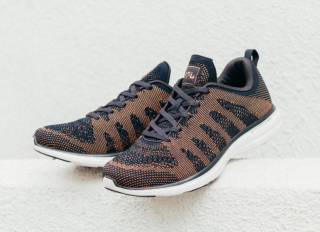
Lululemon is expanding its offerings and is now offering both men’s and women’s footwear at 23 locations across the United States and Canada. The shoes, by Athletic Propulsion Labs (APL), average about $150.
“We look forward to inspiring more sweaty pursuits by offering a one-stop shop with an in-store shoe option to complete our guests’ outfits,” said Celeste Burgoyne, EVP, retail, Americas, Lululemon, reports Footwear News. “APL shares our brand values of providing a quality technical product that elevates and celebrates our guests to live a life they love.”
The shoe offerings, including the TechLoom Pro (pictured above), are all unisex. This means if your size is sold out, you may still be able to get the pair of your choice. APL instructs: “If your size is sold out, simply select a men’s size and adjust the fit down by a size and half. For example, a size 9 in women’s is a size 7.5 in men’s.”
For a full list of Lululemon locations that will carry APL shoes, visit APL’s store locator online. As of now, cities include Denver, Scottsdale, Seattle, Atlanta and New York. It is unknown as to whether or not more locations will begin carrying the shoes in the future.
RELATED: Take A Look At Brooks’ New National Parks Collection
The post Lululemon Announces Plans To Sell Footwear In Select Stores appeared first on Competitor.com.
What’s The Right Running Book For You?

Running might not be too conducive to reading—at least not at the same time. However there are so many awesome books for runners. They come in many different forms, from serious training programs to humorous stories. But they all have one thing in common: they were written by runners for runners. Take a look at the following list to find the right book for you.
For the science types
Why We Run by Bernd Heinrich. OK, I’m not a science type, but this book easily blends biology, anthropology, psychology, and philosophy into a book about running. If that doesn’t intrigue you, then you’re probably not a science person either.
For the beginners
No Need For Speed by John Bingham. If you’re just entering the running world, you’ve probably never heard of Mr. Bingham before. He is a voice for the back-of-the-packers and has done wonders for mainstream running. This book is a nice easy introduction into running, with plenty of practical tips, as well as stories from his foray into running.
For the marathoners
Marathon Man by Bill Rodgers and Matthew Shepatin. You wanna be inspired to get out there and log your miles? Look no further then adding this option to your audio book line-up.
For the goal oriented
Peak Performance by Brad Stulberg and Steve Magness. Written by a former consultant and a running coach, the book uses a blend of personal stories and scientific insights to show the best way to sustain great performances in every aspect of life, not just running.
For the story teller
Running: A Love Story by Jen. A Miller. This memoir follows Miller’s story of how running touched her life and got her through many difficult times, including the end of a relationship. Such a relatable and emotional read for runners.
For the foodie
Run Fast Eat Slow by Shalane Flanagan and Elyse Kopecky. Maybe you wouldn’t set down to read a cookbook (although some people do) but then again, not many Olympians are sharing exactly what they eat to run their best. You’ll want to try all of these delicious recipes.
Related: Healthy Recipes To Try From “Run Fast Eat Slow”
For the history buff
Unbroken by Laura Hillenbrand. While this story might be more about a soldier in World War II trying to survive being lost at sea, there’s an underlying story of his past dreams of making the Olympic team. A hidden running tale within a book about war.
For the kid at heart
The Non-Runner’s Marathon Guide for Women by Dawn Dais. Get off your butt and on with your training. If you’re looking to inject a little bit of humor into your running, then look no further. Dawn will keep you laughing all while inspiring you to get out there.
For the existentialist
To Be a Runner by Martin Dugard. If you’re one who’s always looking for a deeper meaning to something, this book will show you how running can make you a better person. If that’s not motivation enough, then…well…we can’t help you.
For the ones in training
Hansons Marathon Method by Luke Humphrey and Keith Hanson. A list on running books wouldn’t be complete without a training book, would it? Of course, there are many different training methods and books out there, but this one is pretty well-known.
Obviously this list only puts a dent in the numerous books out there on running, but it is a great place to start.
For more from Kelsey Sheron, visit The Blonder Side of Life!
The post What’s The Right Running Book For You? appeared first on Competitor.com.
August 10, 2017
An Expert Weighs In: Can Certain Workouts Be Considered Cults?

During my first week at Competitor in June, there was a lot of getting-to-know-you small talk with new colleagues. As you’d expect at a running magazine, the topic of workouts is a popular subject. I mentioned that I did CrossFit in my 20s, but now that I’m 40 I enjoy Orangetheory Fitness as a supplement to running.
“The cult workouts,” joked a colleague.
Though the comment was said in jest, my gut reaction was still self defense. What’s it to you if I enjoy a little camaraderie with my workout? This is my tribe, not a cult.
I’ll show you, my new smarty-pants co-worker. I’m going to find an authority on cults and debunk your shallow-minded insinuation. With that thought, I was officially speeding headfirst down the narcissistic, self-righteous rabbit hole.
I found Janja Lalich, professor emerita of sociology at California State University, Chico, and an expert on cults, extremism and undue influence. Two minutes into our conversation, I knew I was guilty of displaying cult-like behavior.
RELATED: 5 Signs That Your Diet Is A ‘Diet Cult’
“People might make those comments about a workout program because the person has become obsessed with it,” Lalich explains. “That kind of single-mindedness is a hallmark of a cult. They aren’t jealous, they just think the person has gone over the top.”
The word “cult” has taken on hyperbolic undertones through the years. “Drink the Kool-Aid” has become such a common idiom that few recall its mass-suicide roots. Today—especially in sports—it simply means to buy into the hype and mindlessly go along with the hot take du jour.
Lalich breaks down the characteristics of a cult into three categories:
There is a charismatic leader.
There is a transcendent belief system. “You’re required to go through some sort of personal transformation to be on the path to salvation—or weight loss,” she says.
There is conforming to the norms of the group.
Hearing this forced me to take a look in the mirrored gym wall and examine how this applies to my fitness life. I follow a charismatic leader (my OTF coach), I underwent a transformation in my thinking (and my weight, thank you very much) and—especially on social media—I conform to the rules of the group.
RELATED: Why Everyone Appears To Be A Better Runner On Social Media
If we go by Lalich’s definitions, then there are plenty of elements within these group workouts to classify them as cults. Or at least cult-like.
The difference is these “cults” want to help people live healthier lives. Would you rather listen to a co-worker talk about the 100 wall balls they did in 10 minutes or the spaceship that’s coming in 2028 to destroy the earth?
If working out hard with friends is being in a cult, so be it. Guess I’ll keep drinking the Gatorade.
The post An Expert Weighs In: Can Certain Workouts Be Considered Cults? appeared first on Competitor.com.
Ryan Hall's Blog
- Ryan Hall's profile
- 21 followers



























